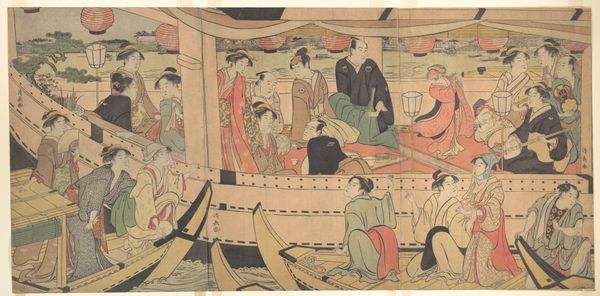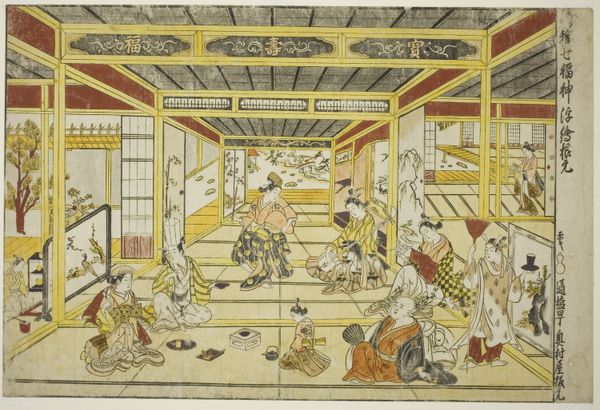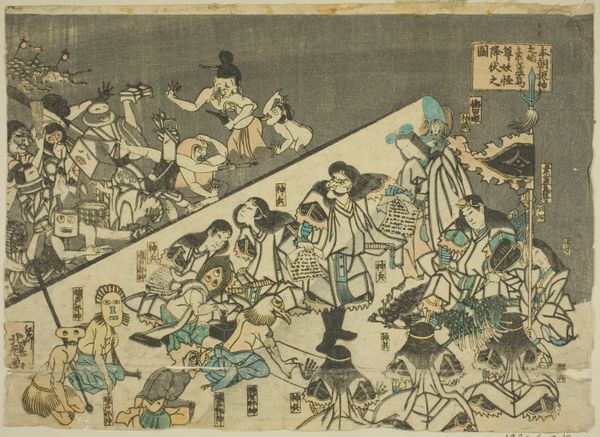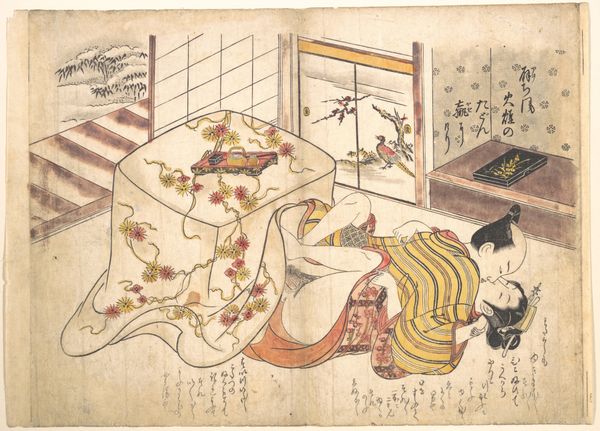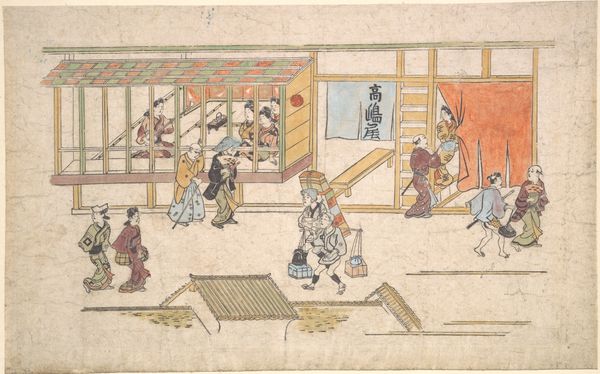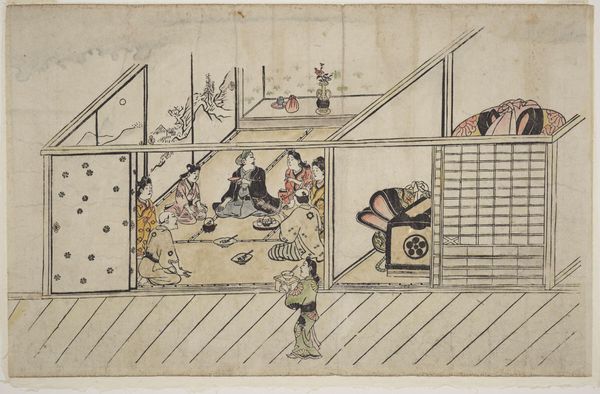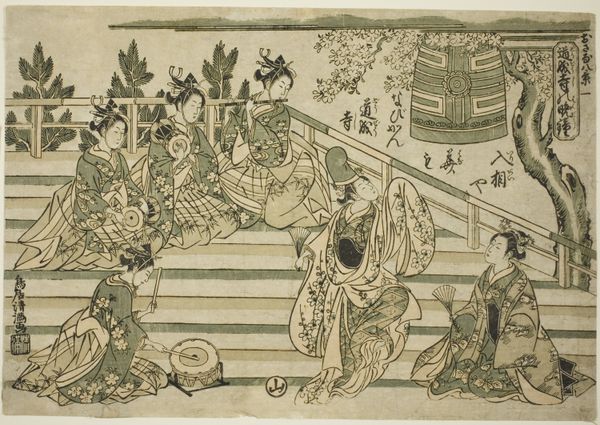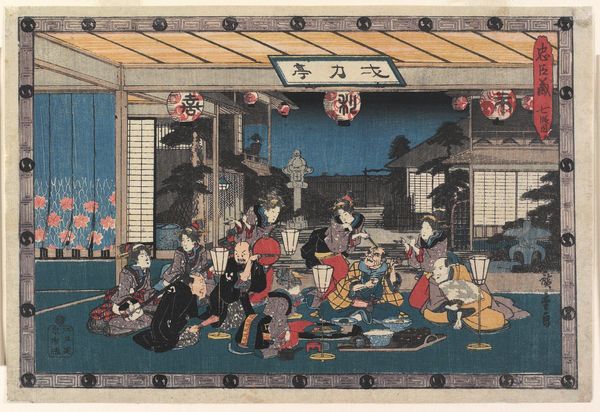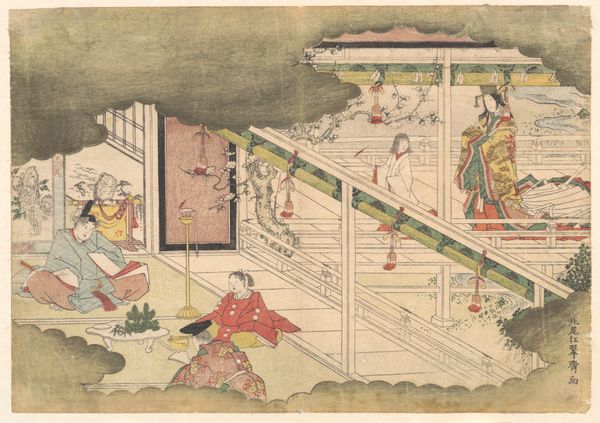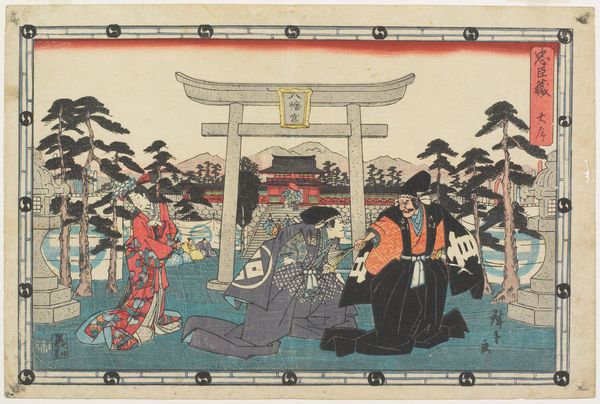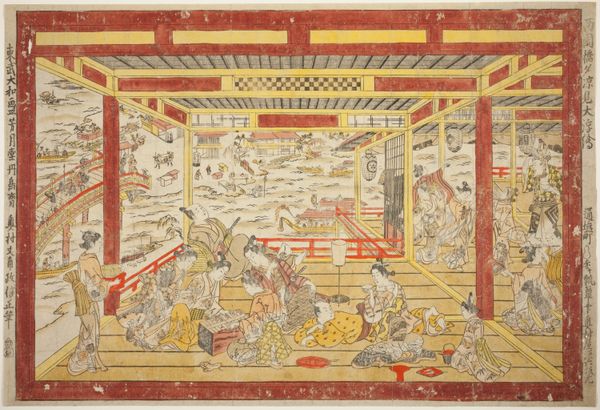
Perpsective View (uki-e) of a Kabuki Theatre, with a Performance of The Crest Patterns of the Soga Brothers and Nagoya Sanza (Mon-zukushi Nagoya Soga) 1748
0:00
0:00
print, woodblock-print
# print
#
asian-art
#
ukiyo-e
#
perspective
#
woodblock-print
#
genre-painting
Dimensions: Horizontal ōban; 12 x 7 in. (30.5 x 17.8 cm)
Copyright: Public Domain
Editor: Here we have Okumura Masanobu's "Perspective View of a Kabuki Theatre" from 1748. It’s a woodblock print offering us a glimpse into the performance of "The Crest Patterns of the Soga Brothers and Nagoya Sanza". The depth is intriguing; it’s like looking into a dollhouse. What strikes you most about this image? Curator: It feels like stepping back in time, doesn't it? What I find compelling is the blending of meticulous architectural detail with the theatrical spectacle. The use of perspective, though perhaps a little wonky by modern standards, gives us this fantastic sense of immersion. I'm drawn to the audience, individually rendered and all craning to watch the drama unfold on stage. Do you see how the artist guides our eye? Editor: Yes, the converging lines pull us right into the scene. The figures in the boxes on the side appear separate, observing the action like a play within a play. What is the dragon-like figure onstage about? Curator: Ah, that's the magic of Kabuki! It signals the theatricality, the larger-than-life emotions being portrayed. Ukiyo-e prints like these weren't just souvenirs; they were vital documents of popular culture, reflecting the tastes and obsessions of Edo-period Japan. Each detail carefully considered... do you think it successfully pulls it all off? Editor: I think it's fascinating how it freezes a fleeting moment, transforming theatre into a tangible memory. I had no idea these prints were such social documents, offering so much insight into that world. Curator: Precisely. And now we carry a piece of that world within us, having contemplated its unique charms and quirks together. Editor: Definitely, looking at it is now like unlocking a secret code to understanding everyday life in 18th-century Japan.
Comments
No comments
Be the first to comment and join the conversation on the ultimate creative platform.
